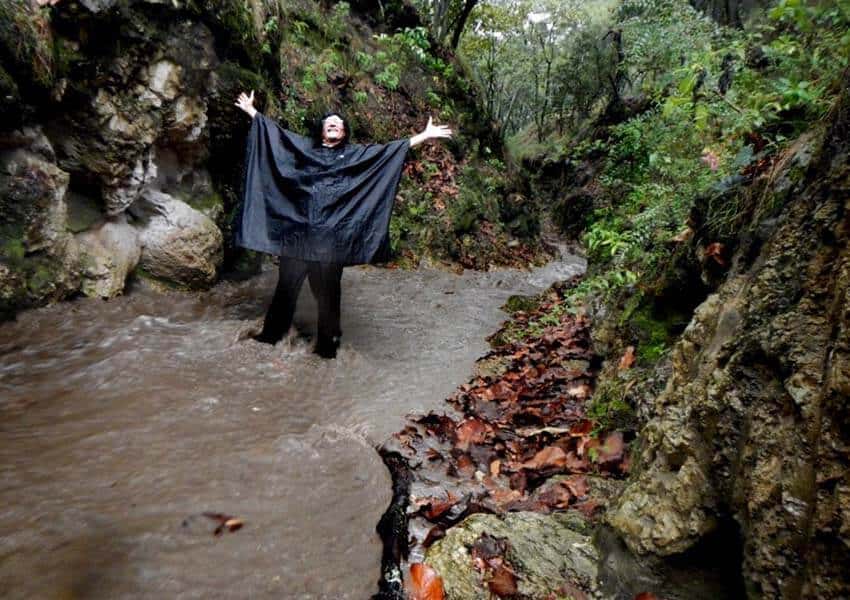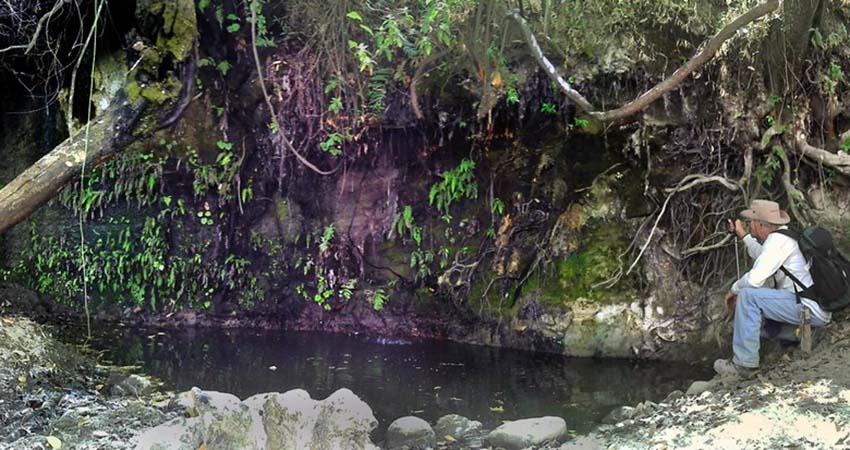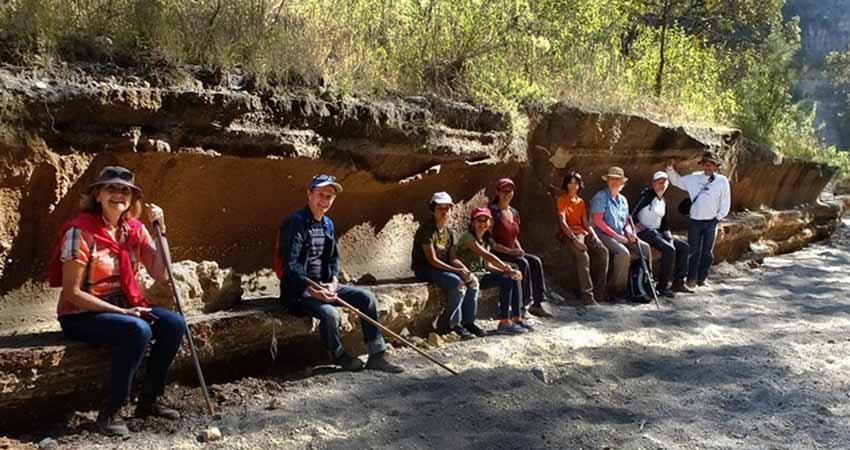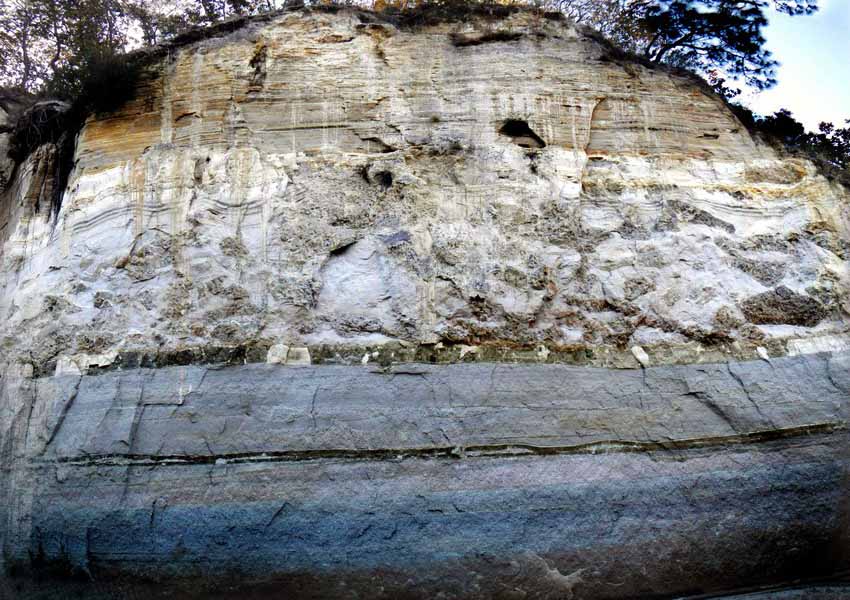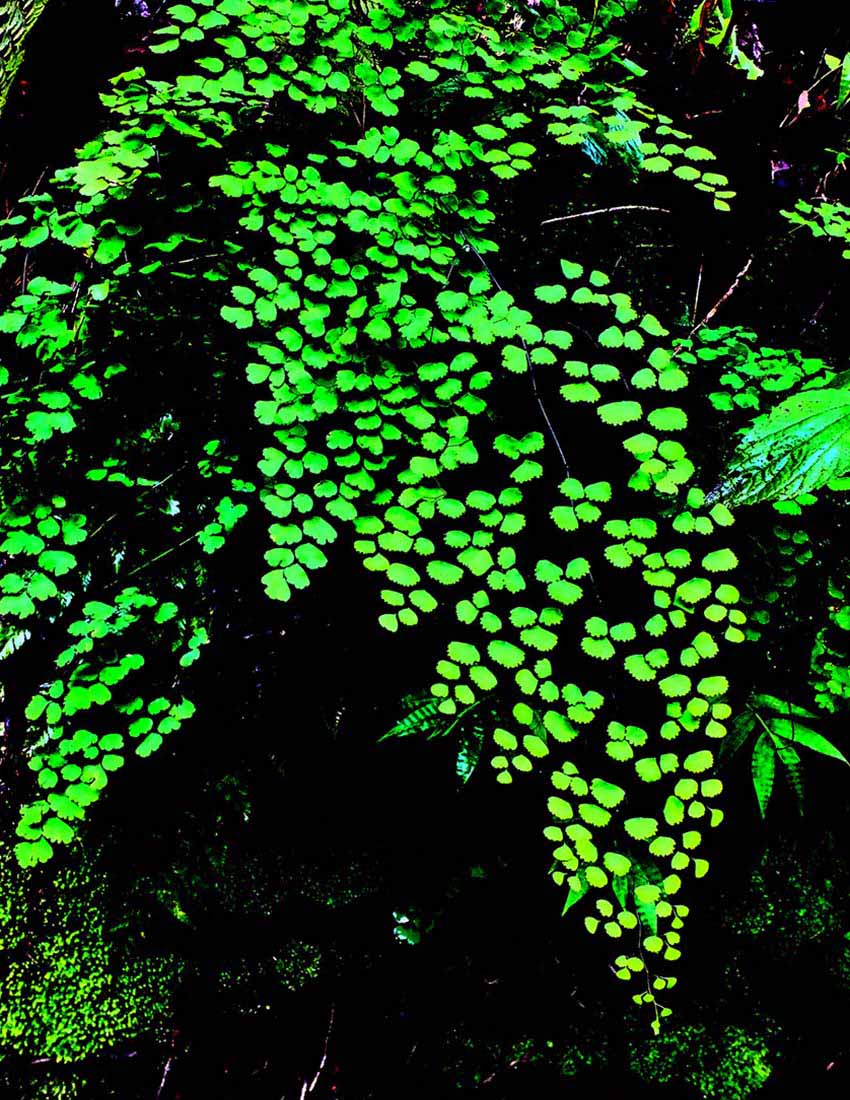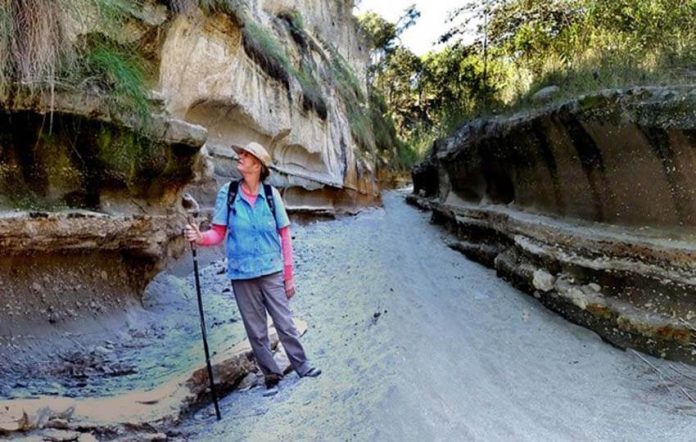El Río Seco is a beautiful, ever-changing canyon that will please hikers of all abilities. This “Dry River” is three kilometers long and runs directly southeast from the northern edge of Jalisco’s beloved Primavera Forest, which is often referred to as the “lung of Guadalajara.”
The walls and floor of the canyon are literally reshaped after every storm, revealing fascinating new rock formations which often surprise and delight visitors who have hiked through the very same place just the week before.
The Río Seco is a perfect walk for families with small children. Because the first part of the canyon is the most susceptible to change, even those who walk only 10 minutes and then turn back will feel their short hike was well worth it.
The walls of this canyon often tower 50 meters above you, and they have a story to tell; in fact, geologists from all over the world will come to the Primavera Forest just to gaze upon sheer canyon walls like these because they clearly tell the story of cataclysmic events that unfolded in this part of Mexico long, long ago.
That story is obvious to a geologist, but it can also hold meaning for the rest of us. First, consider this: 95,000 years ago, the area encompassed by what is now the forest exploded in a Yellowstone-style volcanic eruption that threw 40 cubic kilometers of ash and rubble high into the air, leaving behind a caldera, or huge hole, which then filled with water and became a lake for 10,000–20,000 years.
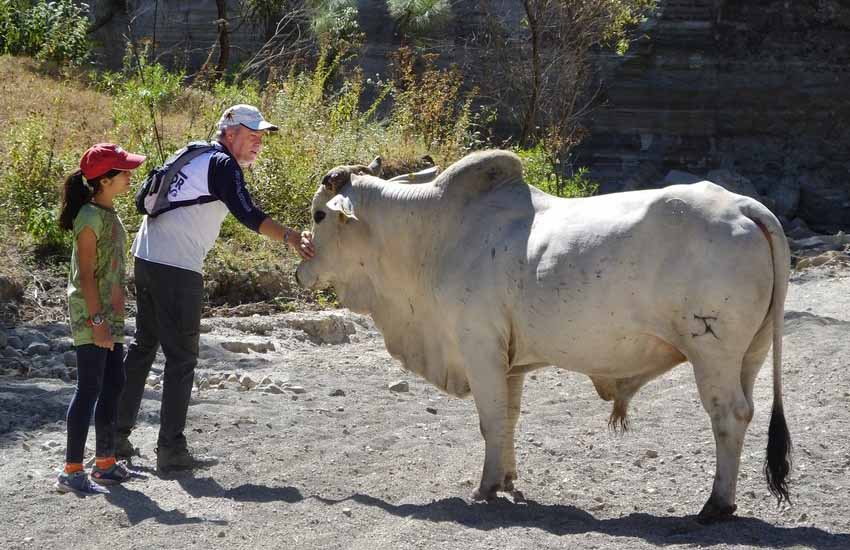
According to geologist Barbara Dye, volcanoes eventually rose up in the lake and spewed out a sort of volcanic foam that hardened into pumice rock so light that it floated on the surface of the lake for a while, though it eventually sank.
This is what geologists — and anyone — can see “written” on the high walls of the Río Seco: long horizontal lines mark layers of sediment accumulated on the lake bottom.
Above many of these strata, you may see a thick layer filled with big pieces of pumice rock, perhaps several meters in diameter. This is what is known as the Giant-Pumice Horizon, one of the most extraordinary features of the Primavera Caldera.
This hike begins at the south edge of the community of Pinar de La Venta, located eight kilometers west of Guadalajara. As you begin walking southeast, following the Río Seco, you will find yourself entirely surrounded by pumice. You are, in fact, walking inside the Giant-Pumice Horizon.
A few minutes later, you will see a horizontal layer of lake silt appear below the pumice blocks, and you can actually touch the contact point.
I mention all this because you may be very distracted by the sheer beauty of the channel you are walking through, incised on both sides by shelf-like rock formations. This is the part of the Río Seco that can look quite different from one day to the next.
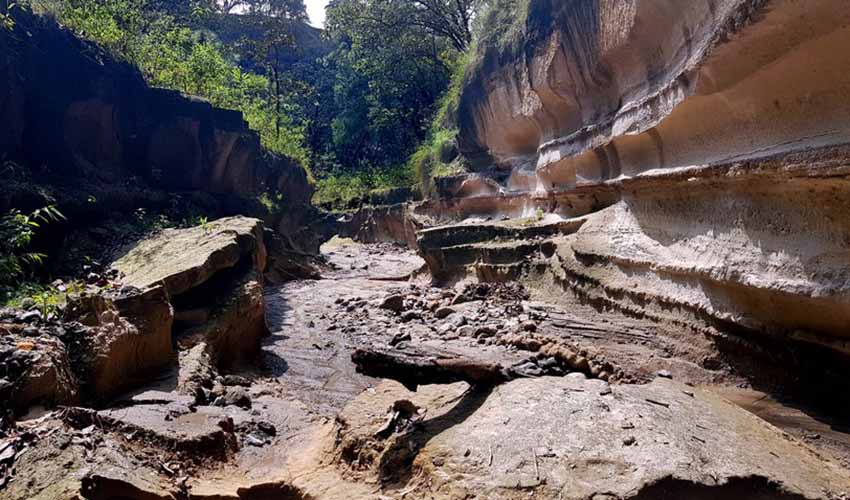
By the way, I should mention that you are now inside a protected forest which, of course, has its rules. It’s easy to understand that you should not pick flowers or kill some poor tarantula you find wandering about, but many people balk at the regulation against taking their dogs with them into this forest.
“It’s not a capriccio,” says federal environmental protection agent Rodrigo Orozco. “Dogs leave traces of their presence wherever they go, and these traces remain for a long time. Shy creatures who live in these woods immediately recognize that an animal that they consider a dangerous predator [that includes even the smallest, cutest dog] has invaded their territory, and they are forced to move away and find a new place to live.
“When you enter a nature reserve, you are setting foot in someone else’s home, and you have to follow their rules.”
As you walk beneath the canyon walls, you immediately notice that the layer of topsoil may often be only 10 centimeters deep with nothing below it but sterile ash and pumice. How can trees possibly grow here?
The answer to this is evident in those same walls. In the Primavera Forest, the trees have learned to send their roots deep down into every crack they can find in hopes of garnering nutrition from what little the rain might wash down into the crevice. This makes it one of the most delicate forests in the world and all the more in need of protected status.
If you continue southeast along the Río Seco for one kilometer, you will go through La Caja de Piedras, The Box of Rocks. This is the narrowest point of the canyon, measuring about two meters wide between high, sheer walls composed of thousands of rocks the size of bowling balls.
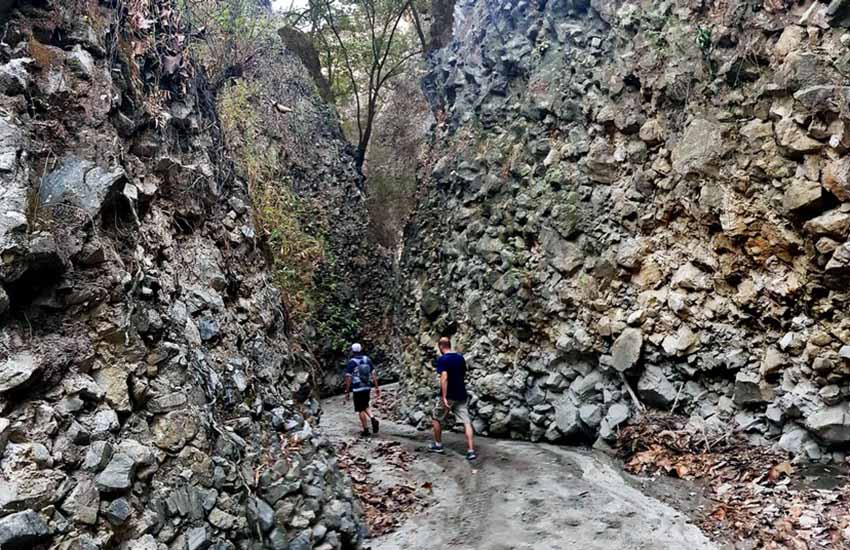
The passage is cool and shaded, and on its walls, you might see delicate Adiantum ferns, known as maidenhair ferns in English, or even a rare kind of wild mint that I’ve only seen in the shaded canyons of this forest.
If you continue walking for another kilometer beyond this point, you will reach an unobtrusive little pool of water. Because it never dries up, even on the hottest day of the dry season, you can be sure that elusive animals like peccaries, possums, ringtails, lynxes and yes, even pumas, come here to drink in the dead of night.
Proof that such animals really live in the Río Seco can be seen only 393 meters beyond the pool. Keep your eyes open and on the right, you will see a smooth white wall maybe a meter and a half high.
This is a deposit of a clay, possibly kaolin (an important ingredient for making high-quality pre-Hispanic pottery), and if you get very close to this wall, you’ll see scratch marks probably made by a raccoon or a coati that then licked its paws in order to ingest the clay and help its body deal with something toxic it had eaten.
About 350 meters beyond this scratching wall, the canyon peters out and turns into a woodsy trail leading to … where, I know not — because that is the farthest I have gone.
When it rains, of course, the Dry River becomes quite wet, and a thunderstorm can turn it into a real river. Just follow the rules for hiking in any canyon: if it looks like rain, stay home and play tiddlywinks.
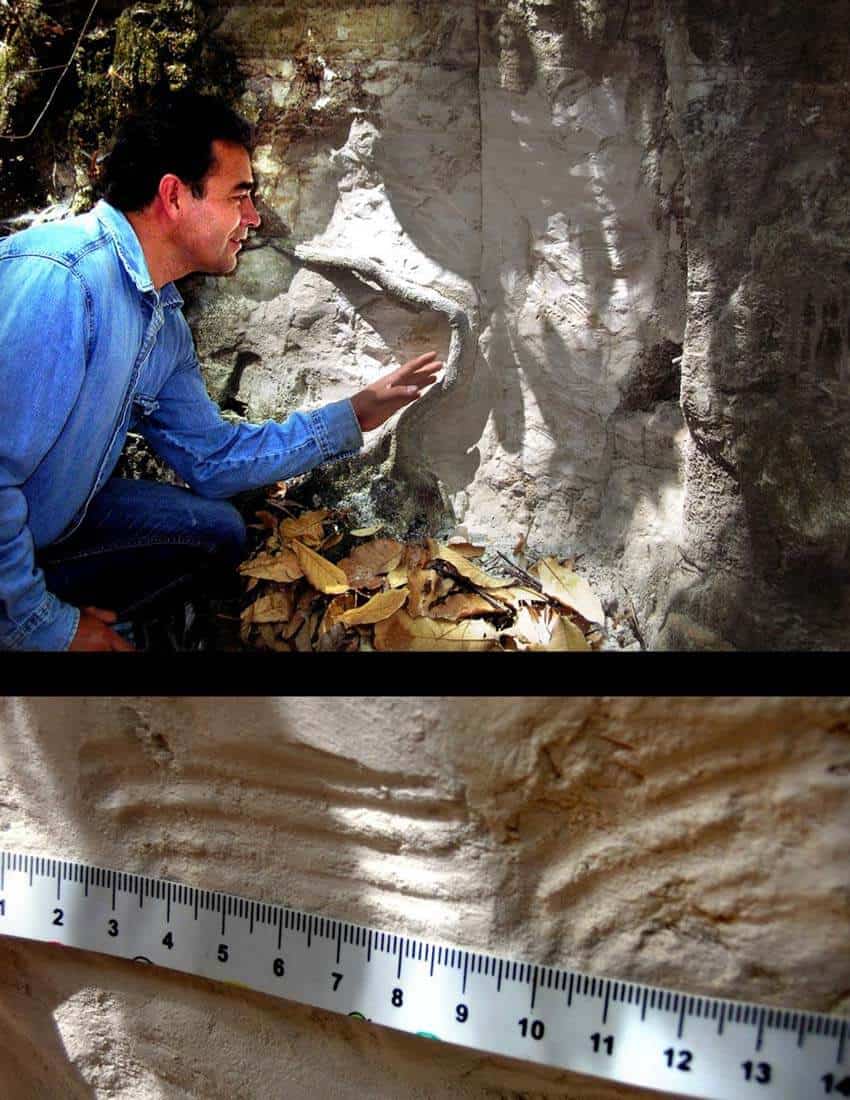
To reach the starting point for this hike — via any sort of vehicle, even an ordinary sedan — ask Google Maps to take you to PF7G+WQ Pinar de la Venta, Jalisco. There, you will find a cylindrical, concrete survey marker indicating the boundary between Pinar La Venta and the Primavera Forest.
Just close to the marker, you’ll find a short trail taking you down into the Río Seco. From here, walk southeast as far as you’d like to go. I’m sure you’ll enjoy the experience!
The writer has lived near Guadalajara, Jalisco, for 31 years and is the author of A Guide to West Mexico’s Guachimontones and Surrounding Area and co-author of Outdoors in Western Mexico. More of his writing can be found on his website.
![]()
Geologist Barbara Dye examines the contact point where pumice ended up at the bottom of a lake that once filled the Primavera Caldera.
